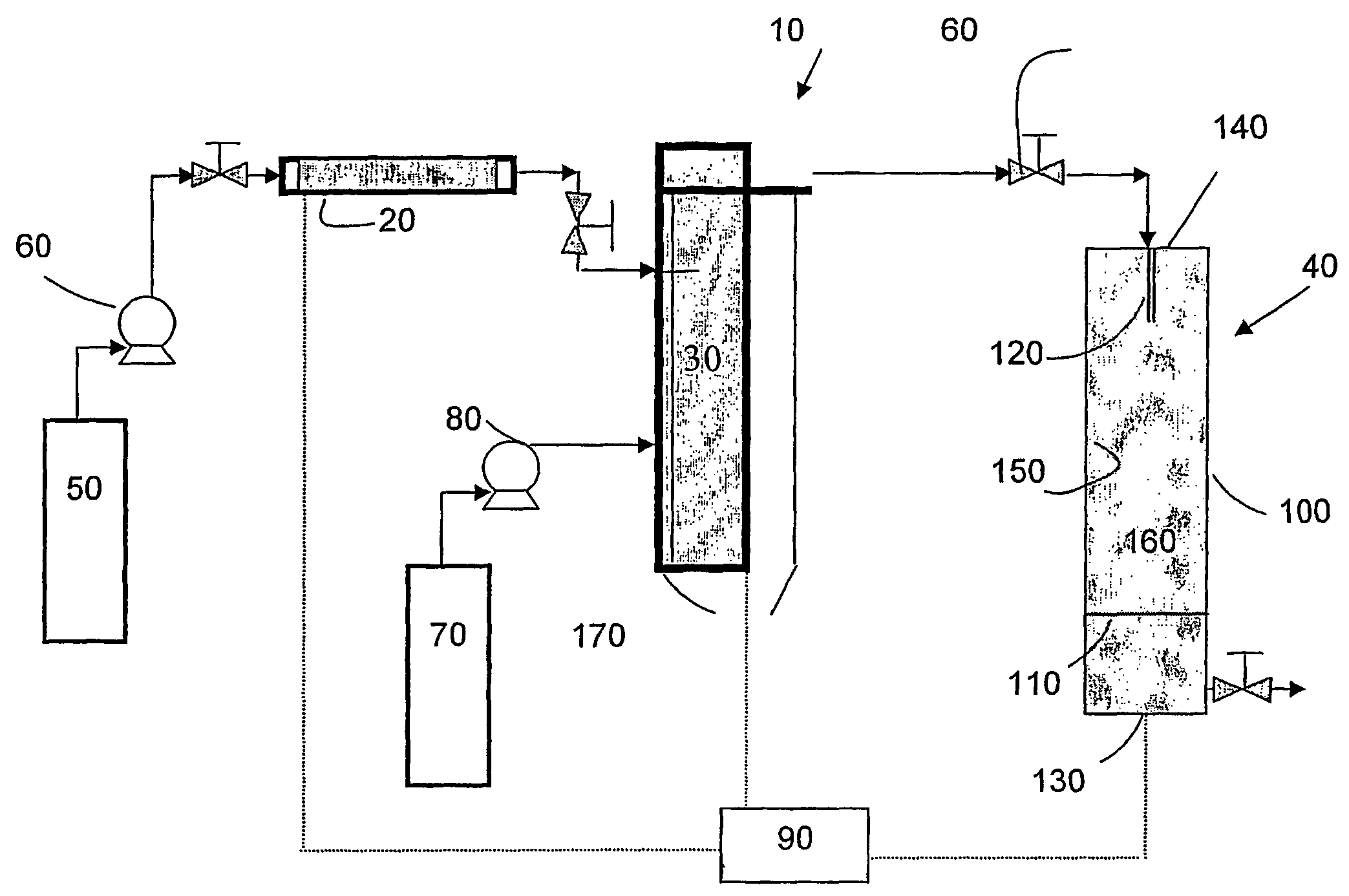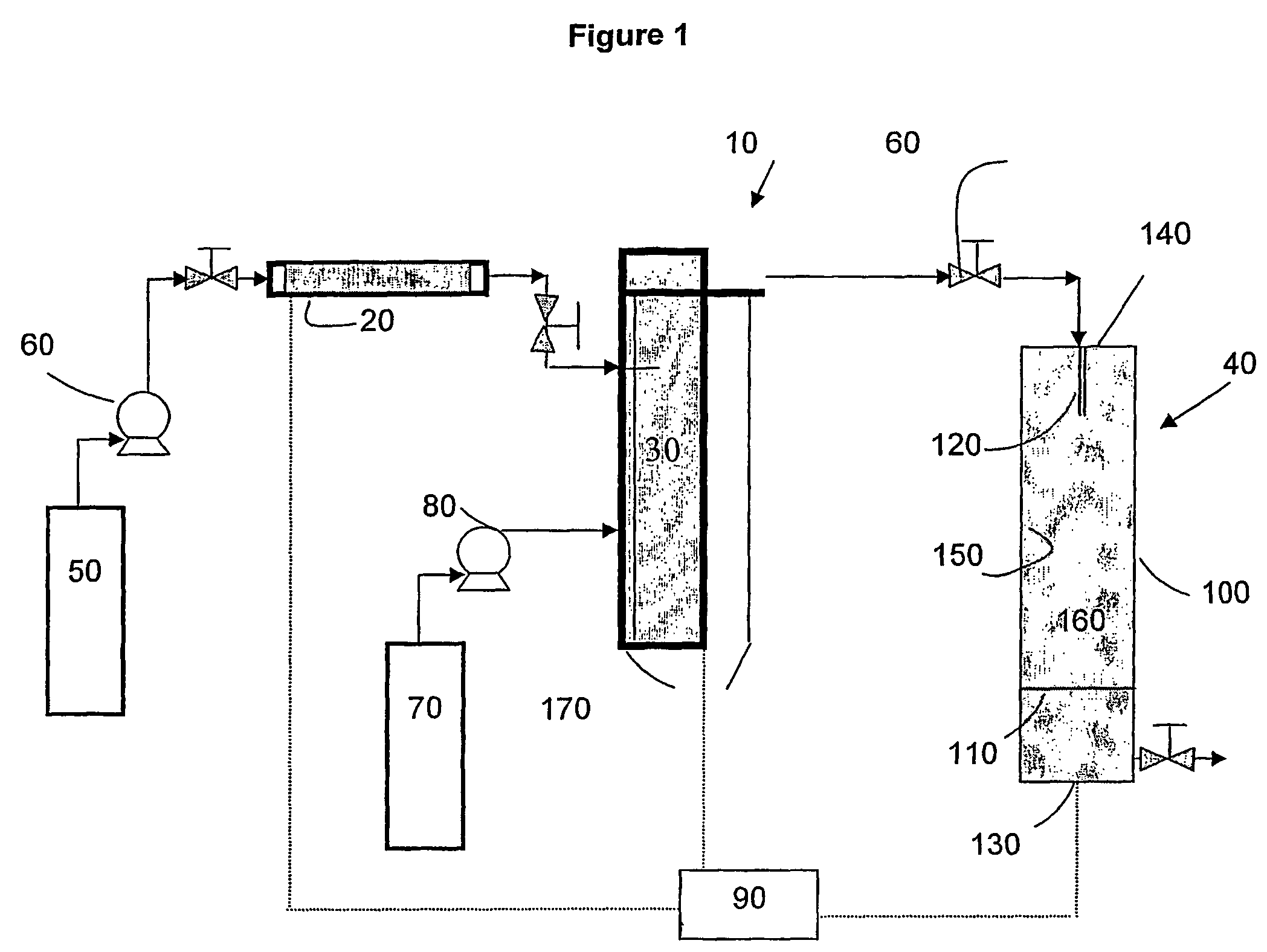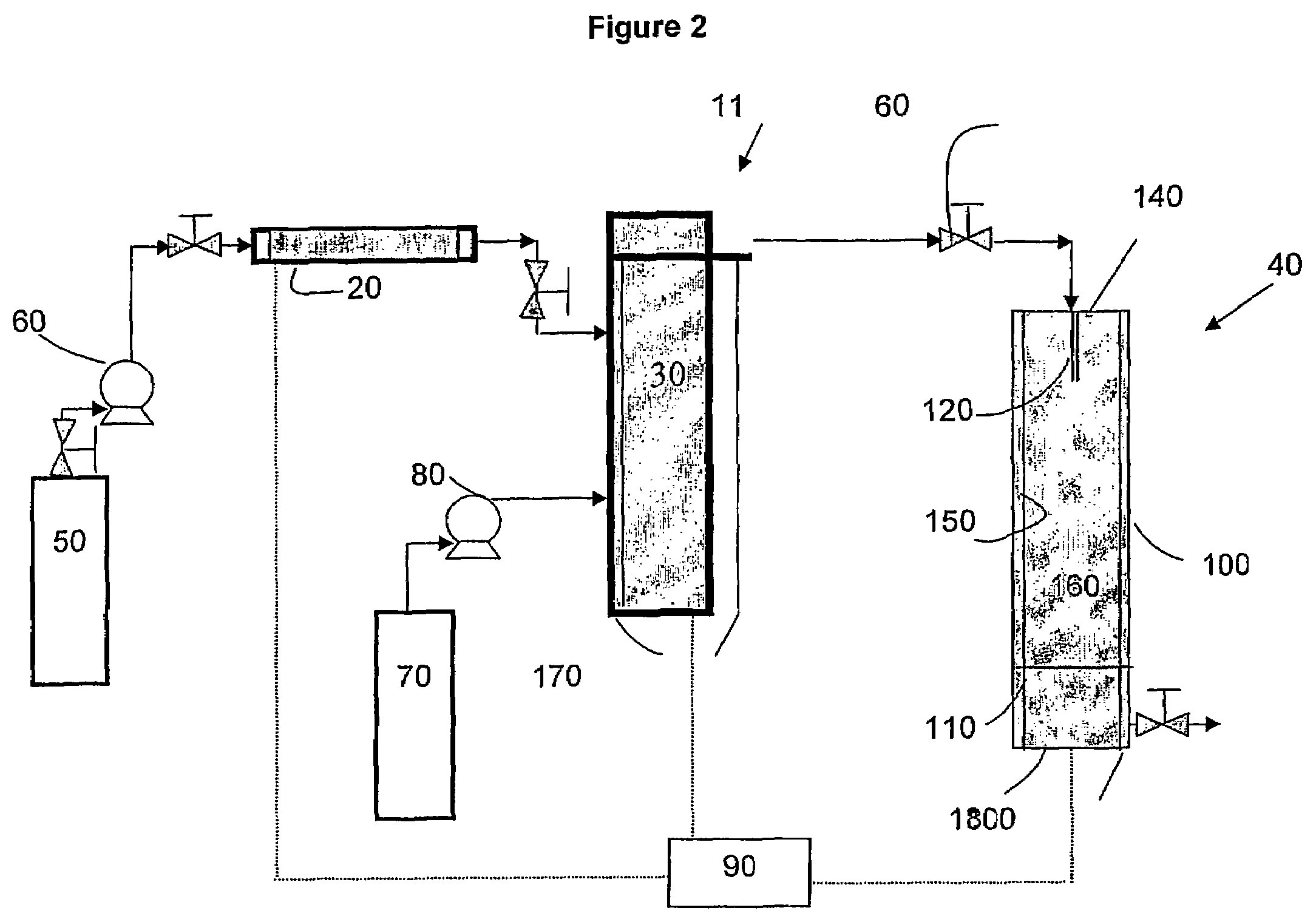Method for preparation of particles from solution-in-supercritical fluid or compressed gas emulsions
a technology of supercritical fluid and compressed gas, which is applied in the direction of antibody medical ingredients, animal repellents, biocide, etc., can solve the problems of degrading some biologically active materials and polymers, and affecting the quality of the product. , to achieve the effect of minimizing agglomeration
- Summary
- Abstract
- Description
- Claims
- Application Information
AI Technical Summary
Benefits of technology
Problems solved by technology
Method used
Image
Examples
first embodiment
[0034]In the-invention, the solution-in-supercritical fluid or compressed gas emulsion (hereinafter sometimes referred to simply as “the emulsion”) is sprayed through an orifice such as a nozzle having one or more small openings into an expansion chamber across a pressure drop. In the spraying process the supercritical fluid or compressed gas used to form the continuous phase of the emulsion acts as a propellant and also as a coolant due to the Joule-Thomson expansion of the supercritical fluid or compressed gas from a compressed to an uncompressed state. As the emulsion expands through the orifice across the pressure drop, the cooling caused by the rapid expansion of the continuous phase of the emulsion causes the discontinuous phase to freeze as fine solid droplets. The frozen droplets, the size of which is defined by the size of the micelles in the emulsion, can be collected and accumulated in the expansion chamber. The frozen droplets are then subjected vacuum drying or lyophili...
second embodiment
[0035]In the invention, the emulsion is sprayed through an orifice such as a nozzle having one or more small openings into a zone that is maintained at a temperature preferably greater than the boiling point of the solvent. The supercritical fluid or compressed gas flash into a gas, and the solvent from the micelles of the emulsion is removed by evaporation (spray drying). The temperature in the expansion chamber must be maintained at a relatively elevated temperature in order to obtain evaporation / vaporization of the solvent. Evaporation of the solvent from the drops or micelles of emulsion results in the precipitation of the solute present in the solution as dry fine particles.
[0036]The first embodiment of the invention can be carried out using an apparatus such as schematically illustrated in FIG. 1. The apparatus 10 includes an extraction column 20, a dispersion assembly 30 for forming supercritical fluid or compressed gas emulsion, an expansion assembly 40, a first supply tank ...
PUM
| Property | Measurement | Unit |
|---|---|---|
| particle size | aaaaa | aaaaa |
| diameter | aaaaa | aaaaa |
| diameter | aaaaa | aaaaa |
Abstract
Description
Claims
Application Information
 Login to View More
Login to View More - R&D
- Intellectual Property
- Life Sciences
- Materials
- Tech Scout
- Unparalleled Data Quality
- Higher Quality Content
- 60% Fewer Hallucinations
Browse by: Latest US Patents, China's latest patents, Technical Efficacy Thesaurus, Application Domain, Technology Topic, Popular Technical Reports.
© 2025 PatSnap. All rights reserved.Legal|Privacy policy|Modern Slavery Act Transparency Statement|Sitemap|About US| Contact US: help@patsnap.com



